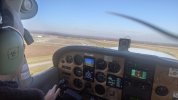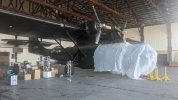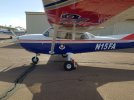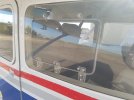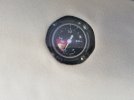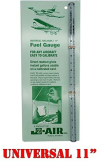Saw a CAP C172 at home plate the other day. Was left outside a mechanic's hangar. Oil, filter tube and tire left out as well. Have no idea why they were there. No CAP at my field. Also no FBOs. Hate to say it, but this mechanic is past his prime. His unlicensed son does 90% the work. I have caught serious lapses in quality and detail by these guys. The hangar is a cluttered mess. They are good people. Have helped me in a pinch once or twice. But I would not let them do anything but an oil or tire change followed by your best preflight. Doesn't the CAP have a contract at a local FBO for that kind of thing?
The aircraft was beautiful. Washed and waxed. Leather upholstery with embroidered insignia. Interesting drop window for the back left pax.
View attachment 28409View attachment 28410View attachment 28411

